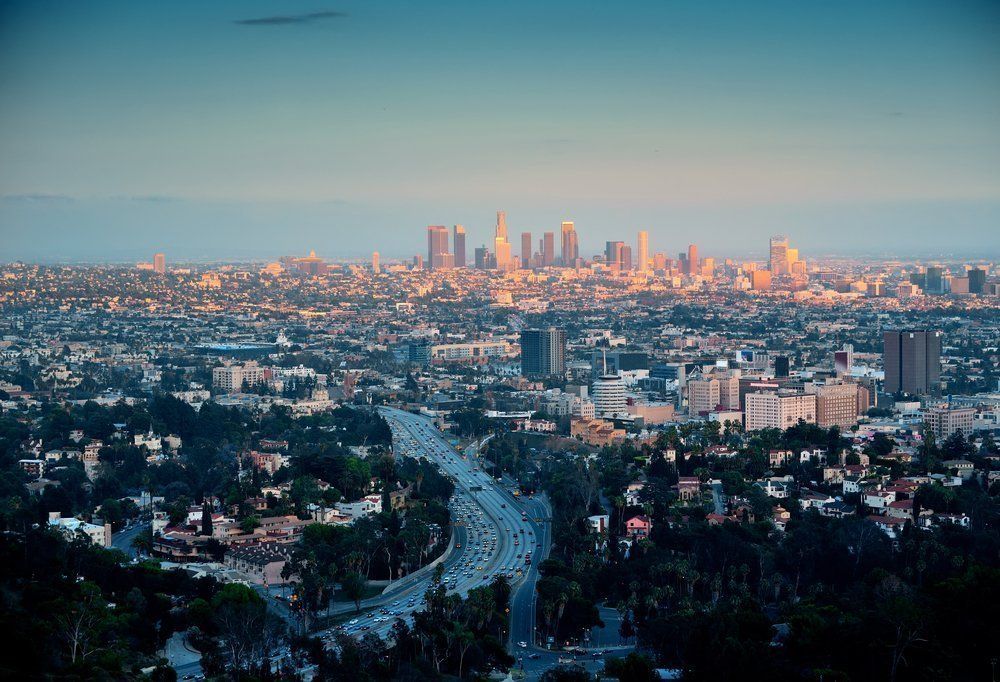
California, a state in the Western United States, is positioned along the Pacific Coast. It holds the distinction of being the nation’s most populous state, with nearly 40 million residents, and the third-largest by area, spanning 163,696 square miles (423,970 km2). Its diverse geography encompasses Pacific Coast metropolitan areas, the Sierra Nevada mountains, redwood forests, and the Mojave Desert. This vast landscape, coupled with a rich and complex history, has shaped California into a global economic and cultural force, a dynamic entity whose evolution continues to resonate across the nation and beyond.
The name “California” originates from “Las Sergas de Esplandián,” a 1510 epic featuring Queen Calafia’s mythical kingdom of gold and pearls; a 2017 state document notes its appearance on a map by 1541, “presumably by a Spanish navigator.” Prior to European colonization, California was one of pre-Columbian North America’s most culturally and linguistically diverse areas. Historians agree that at least 300,000 Indigenous people from over 70 distinct ethnic groups inhabited the region, practicing complex ecosystem management like forest gardening and controlled burning. These groups developed varied political organizations, and gender roles were distinct, notably including individuals known as joyas or two-spirit, who held important ritualistic roles.
European contact began in 1542 with a Spanish maritime expedition led by Portuguese captain Juan Rodríguez Cabrillo, entering San Diego Bay. Despite early explorations by figures like Cabrillo and Francis Drake, the misconception of California as an island persisted on European maps. The pivotal Portolá expedition (1769–70) established Mission San Diego de Alcalá and Presidio of San Diego, followed by Father-President Serra’s founding of 21 Spanish missions along El Camino Real, from which major cities like San Francisco emerged. The Juan Bautista de Anza expedition (1775–76) led to further settlements, including the first civilian city, San Jose, founded by José Joaquín Moraga in 1777, while Russian explorers also established a short-lived post at Fort Ross.
In 1821, the Mexican War of Independence granted California independence from Spain, transforming it into a remote Mexican administrative district. Many Californios, feeling neglected by Spain, supported this shift, which allowed California ports to trade freely with foreign merchants. The secularization of missions by 1834 transferred vast lands to the Mexican government, leading to the rise of enormous ranchos owned by Californios, who primarily traded cowhides and tallow. From the 1820s, American and Canadian trappers and settlers began arriving, and California experienced internal armed disputes due to Mexico’s unstable government, notably during Governor Juan Bautista Alvarado’s 1836–1842 tenure.

John Marsh, a major rancher, advocated for U.S. annexation, inspiring the first wagon trains via “Marsh’s route” and facilitating California’s acquisition by mediating political conflicts. The 1846 Bear Flag Revolt by American settlers in Sonoma, raising the “California Republic” flag, served as a prelude to the Mexican–American War (1846–1848). Commodore John D. Sloat initiated the U.S. military invasion in 1846, leading to Northern California’s swift capitulation, though Southern Californios resisted until the Treaty of Cahuenga in January 1847 established de facto American control.
The Treaty of Guadalupe Hidalgo (February 2, 1848) formalized California’s annexation, making it an American state. Crucially, gold was discovered just one week prior, triggering a massive immigration influx that swelled the settler population from 8,000 in 1846 to 100,000 by 1850 statehood and over 300,000 by 1854. California was admitted as a free state on September 9, 1850, as part of the Compromise of 1850, after its first Constitutional Convention in Monterey. The state capital, after various interim locations, settled in Sacramento in 1854, with the completion of the transcontinental railroad in 1869 drastically reducing travel time to the East.
California’s fertile lands became highly productive in agriculture, but rapid growth also brought social challenges. Large-scale Chinese migration, vital for railroad construction, led to anti-Chinese riots and contributed to the 1882 Chinese Exclusion Act. A darker period was the California genocide (1846–1873), perpetrated by U.S. government agents and settlers against Indigenous Californians, resulting in at least 9,456 deaths, with estimates up to 100,000, compounded by prior population decline from Eurasian diseases. California’s first governor, Peter Hardeman Burnett, instituted policies described as a “state-sanctioned policy of elimination,” famously declaring in 1851 a “war of extermination will continue to be waged between the races until the Indian race becomes extinct.” Indigenous peoples faced forced removal, de facto enslavement under the 1850 Act, and numerous massacres by state-paid militias, along with forced relocations to inadequate reservations; scholars and Governor Gavin Newsom have since described these actions as genocide.

The 20th century brought further transformations, including Japanese migration countered by the 1913 Alien Land Act, and later the internment of Japanese Americans during WWII, for which California apologized in 2020. Population growth surged from under one million in 1900 to the Union’s largest by 1965, fueled by transcontinental highways like Route 66. Massive engineering projects, including the California Aqueduct and Golden Gate Bridge, were built to meet the population’s needs, alongside the 1960 California Master Plan for Higher Education. Hollywood studios cemented Los Angeles as a global film capital, while World War II transformed California into a manufacturing powerhouse, contributing 9% of US armaments and leading in military ship production. Post-war, strong aerospace and defense industries expanded, and Stanford University fostered Silicon Valley’s emergence, positioning California as a world center for entertainment, technology, and agriculture, boasting the world’s fifth-largest economy before the Dot Com Bust.
Mid-to-late 20th century saw race-related incidents like the 1992 Rodney King riots, with California as a hub for groups like the Black Panther Party, and migrant farm workers rallying for pay under Cesar Chavez. The state also endured deadly disasters, including the 1906 San Francisco earthquake. Air pollution has been reduced, though health problems persist, and a 2001 energy crisis led to rolling blackouts. Housing prices surged by 2005, leading to a speculation-fueled bubble burst in 2007–08, causing widespread foreclosures and vanished property values.
The 21st century faces ongoing droughts and frequent wildfires, exacerbated by climate change, with atmospheric rivers causing intense winter flooding. The COVID-19 pandemic also heavily impacted California, leading to a state of emergency from March 2020 to February 2023 and a mandatory stay-at-home order. Amidst these challenges, there has been progress in cultural and language revitalization among Indigenous Californians, with some land returns and the Klamath River dam removal project marking significant gains for tribes.

California’s vast area makes it the third-largest U.S. state, showcasing immense geographical diversity, typically bisected into Southern and Northern California. Its borders include Oregon, Nevada, Arizona, Mexico’s Baja California, and the Pacific Ocean. The fertile Central Valley, bounded by mountain ranges, defines the state’s center, split by the Sacramento-San Joaquin River Delta, which provides water for nearly two-thirds of California’s population and agriculture through an extensive canal network. The majestic Sierra Nevada, home to Mount Whitney (the contiguous 48 states’ highest peak), Yosemite Valley, and giant sequoias, boasts Lake Tahoe and small glaciers, contrasting with arid eastern regions like Owens Valley and Death Valley, which contains North America’s lowest and hottest point.
Approximately 45 percent of the state is forested, with unmatched pine diversity and some of the world’s oldest trees in the White Mountains. Southeastern California is largely a hot desert, with the Colorado River forming the Arizona border and supplying half of Southern California’s water. Most of California’s cities are concentrated in major metropolitan areas along the coast and in the interior, such as the San Francisco Bay, Los Angeles, and San Diego. As part of the Ring of Fire, the state is prone to natural hazards including tsunamis, floods, droughts, wildfires, and frequent earthquakes—about 37,000 annually—due to multiple faults like the San Andreas, with two-thirds of Americans at risk from major earthquakes residing in California.
Most of the state experiences a Mediterranean climate, characterized by cool summer fog near the coast from the California Current. However, its immense size and topography lead to wide variations, from moist temperate rainforests in the north to arid deserts and snowy alpine mountains. Droughts and wildfires remain ongoing concerns, while increasingly prevalent atmospheric rivers contribute to intense winter flooding events, further defining California’s dynamic and challenging environmental landscape.

California’s economy is the largest of any U.S. state, with an estimated 2024 gross state product of $4.172 trillion, making it the world’s largest sub-national economy. If independent, it would rank as the fourth-largest globally by nominal GDP, ahead of Japan as of 2025. The state leads the nation in agricultural output, particularly dairy, almonds, and grapes. California plays a pivotal role in the global supply chain, hosting the busiest port in the U.S. (Los Angeles), which handles about 40% of imported goods, and is a world center for entertainment with Hollywood, technology with Silicon Valley, engineering, and aerospace industries.
From its mythical etymology to its status as a global titan, California embodies profound contrasts and enduring allure. It is a land shaped by geological forces, constantly adapting to environmental challenges while striving for sustainability. Its complex past, marked by the convergence of diverse cultures, Spanish and Mexican rule, and American expansion—including periods of immense opportunity and grave injustices like the California genocide—continually informs its identity. The Golden State’s journey is a compelling narrative of human endeavor, encompassing grand engineering, entrepreneurial spirit, and ongoing struggles for civil rights and social justice. As it navigates the complexities of the 21st century, California showcases a relentless spirit of innovation and resilience, a vibrant tapestry of historical depth, geographical grandeur, and an unyielding commitment to shaping the future, truly a narrative as vast and varied as its landscape.



